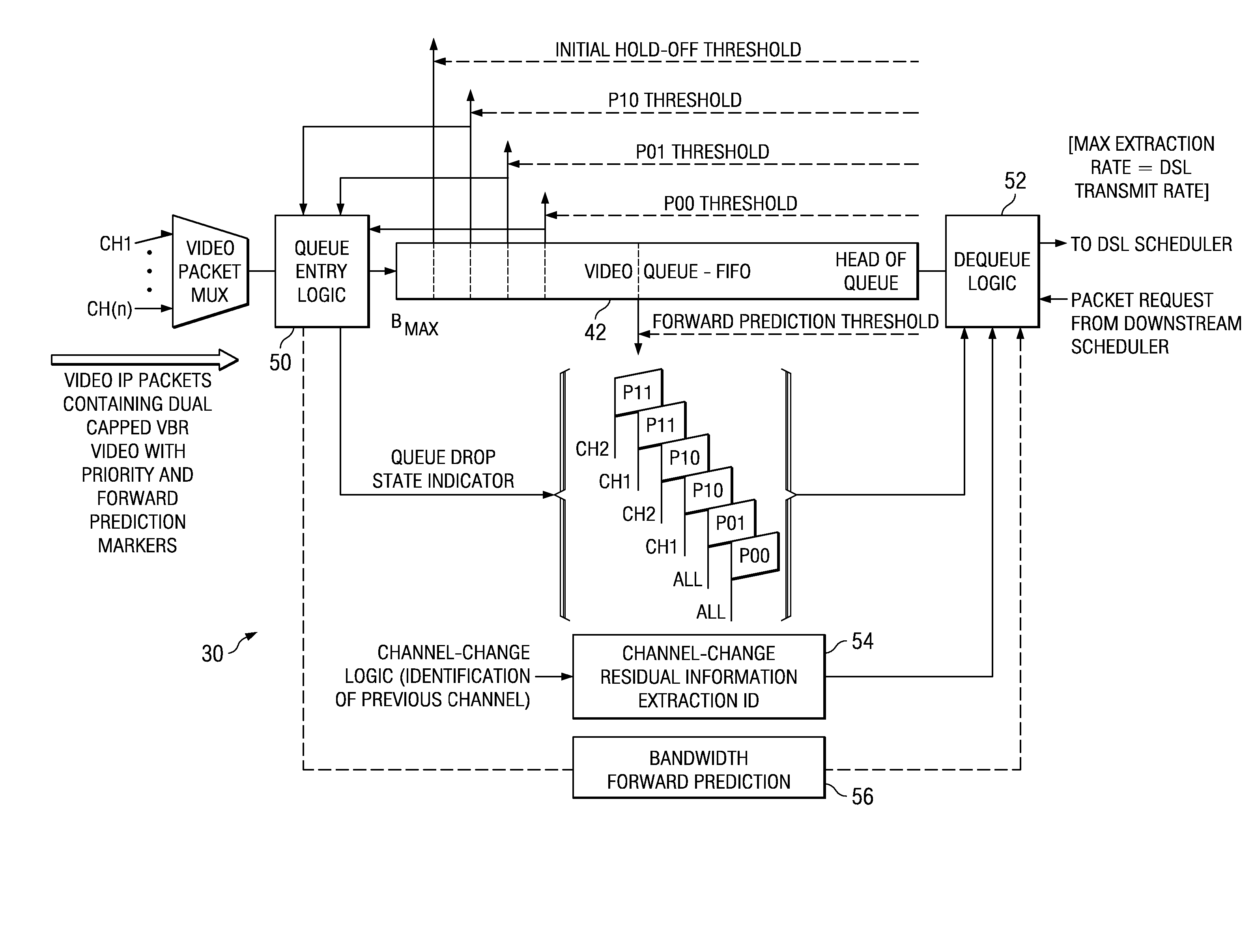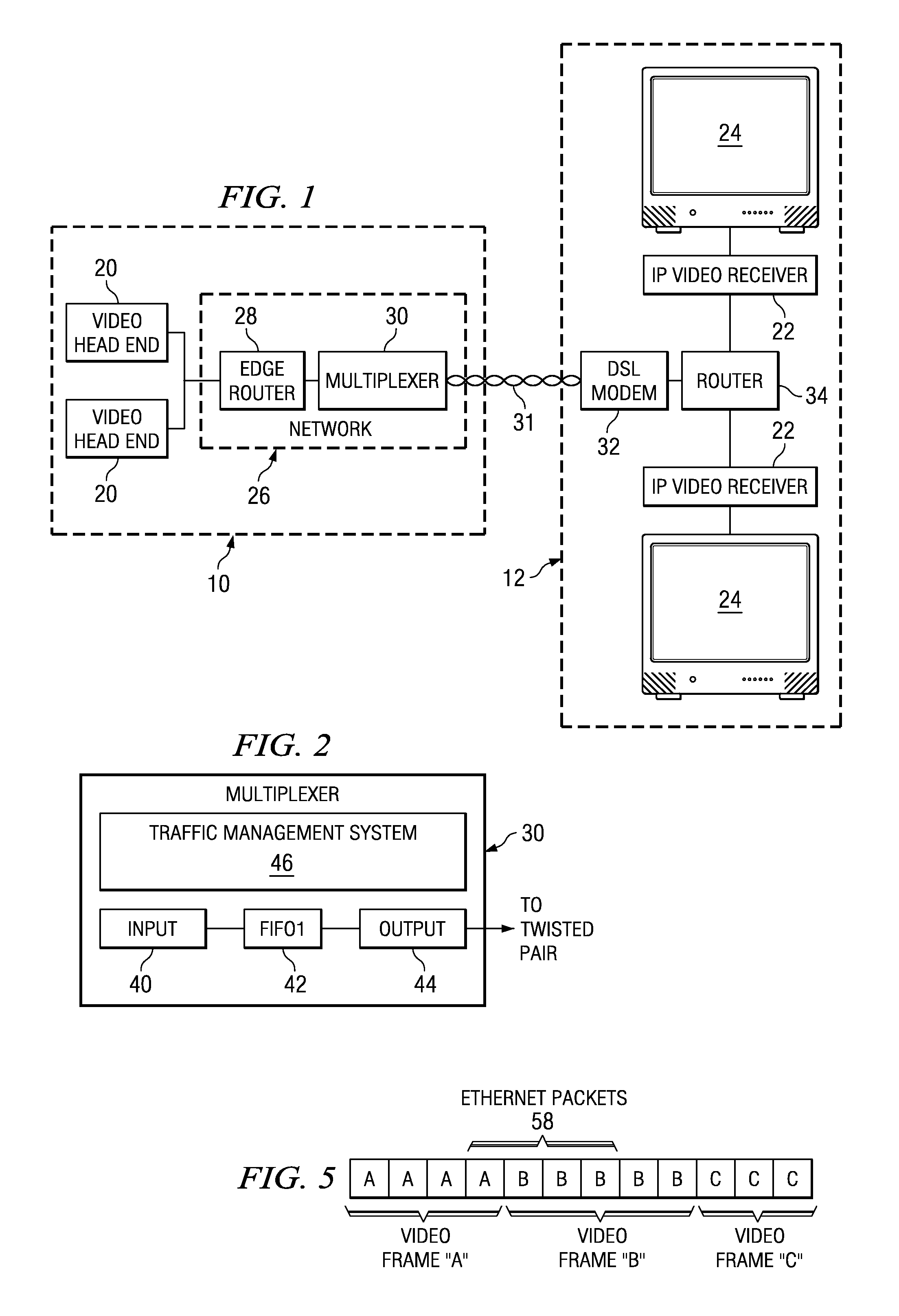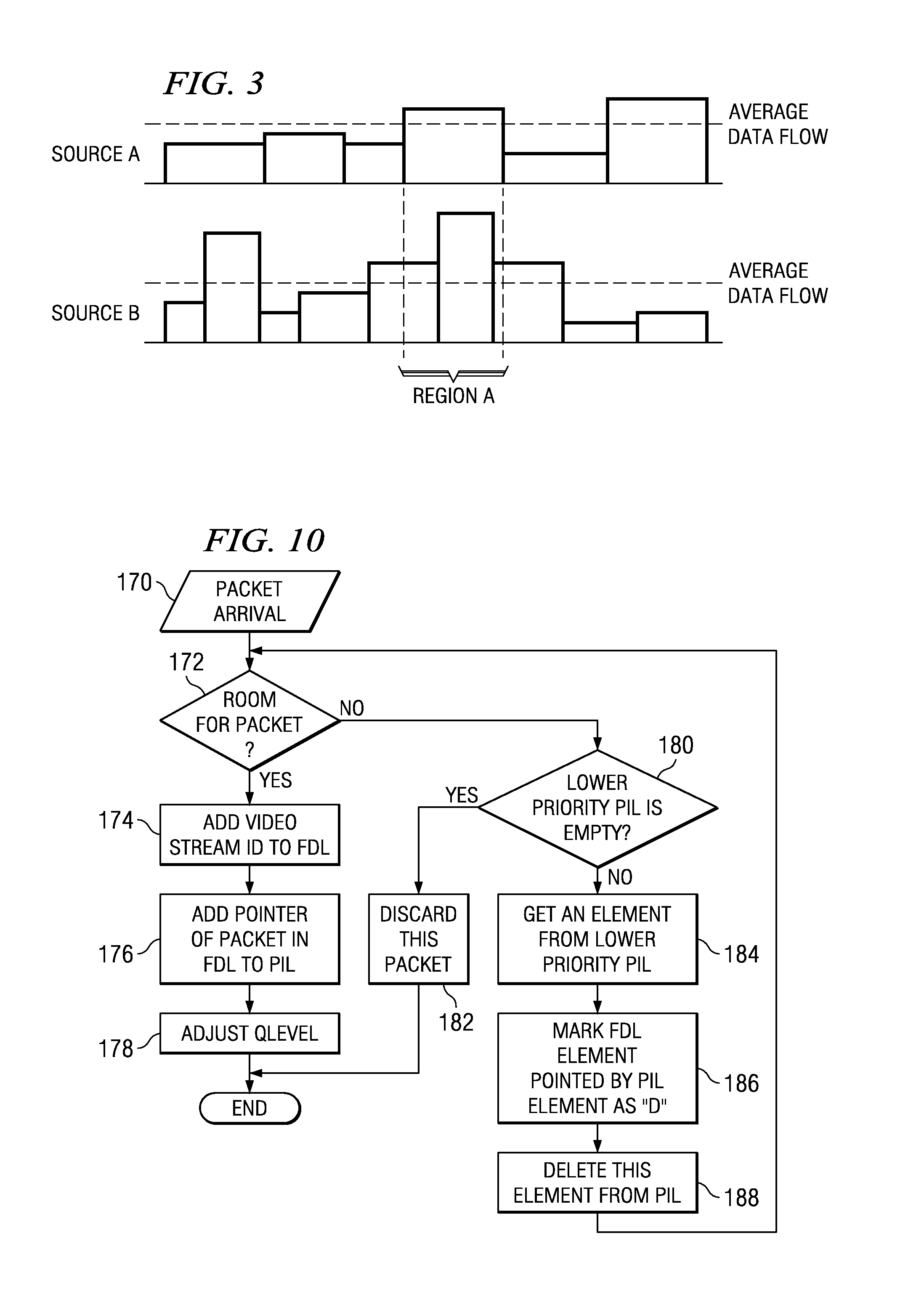Video aware traffic management
a traffic management and video technology, applied in the field of network communication, can solve problems such as uncontrollable errors, packet loss for a variety of packets, and packet loss randomly, and achieve the effect of superior receiving performan
- Summary
- Abstract
- Description
- Claims
- Application Information
AI Technical Summary
Benefits of technology
Problems solved by technology
Method used
Image
Examples
Embodiment Construction
[0030] The present invention is best understood in relation to FIGS. 1-22 of the drawings, like numerals being used for like elements of the various drawings.
[0031]FIG. 1 shows a block diagram of an IP video network 10 for sending video programming to a site 12. Sources (such as video head ends, or VHEs) 20 provide the programming by streaming video information in packets. The packets are ultimately received by one or more IP video receivers 22 at the site 12. The IP video receivers 22 translate the video packets to video for video monitors 24. To get to the IP video receivers 22, the data must pass through a public / private network 26 which may include a plurality of routers, including edge router 28. The output of edge router 28 is received by multiplexer 30 (which could be, for example, a DSLAM access element), where the data for multiple video channels is multiplexed onto twisted pair lines 31. A modem 32 (such as a DSL modem) on the user site communicates between the multiplexe...
PUM
 Login to View More
Login to View More Abstract
Description
Claims
Application Information
 Login to View More
Login to View More - R&D
- Intellectual Property
- Life Sciences
- Materials
- Tech Scout
- Unparalleled Data Quality
- Higher Quality Content
- 60% Fewer Hallucinations
Browse by: Latest US Patents, China's latest patents, Technical Efficacy Thesaurus, Application Domain, Technology Topic, Popular Technical Reports.
© 2025 PatSnap. All rights reserved.Legal|Privacy policy|Modern Slavery Act Transparency Statement|Sitemap|About US| Contact US: help@patsnap.com



